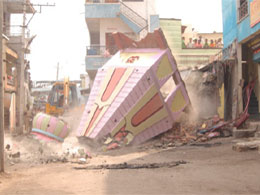Jun 10: Indian-origin California Senator Kamala Harris has joined former vice president and 2020 Democratic presidential nominee Joe Biden to raise USD 3.5 million for the upcoming November elections.
Tuesday's fundraiser is the second-largest single event haul so far for the Biden campaign, which raised USD 4 million at one event earlier this month.
Harris' presence during the virtual mega fund raiser assumes significance as the Democratic Party leaders consider her to be one of the front-runners to be the nominee for vice president. The 55-year-old lawyer-politician was once considered to be a strong opponent of Biden in the 2020 Democratic primaries.
Introducing Harris to the 1,400 supporters present at the event, Biden underlined the history-breaking nature of her past electoral wins.
"For much of her career, she was the only person in the room who looked like she did," he said.
At the start of the campaign last year, Harris was very critical of Biden. She later endorsed him, months after she decided to withdraw herself from the race to the White House.
During the fundraiser, Harris was effusive in her praise for Biden.
Referring to Biden's meeting with George Floyd's family, she said, "He (Biden)is someone who whether one on one or speaking to the nation always has a sense of how people are experiencing this world, and what their needs are...This moment in the history of our country really represents an extraordinary exercise in contrast."
"On the other hand, we have a Donald Trump who had the gall to dispatch the US military to clear the streets so that he could prance down and then, like a prop, hold up the bible for a photo op," Harris said.
The death of African-American Floyd during police confinement in Minneapolis on May 25 has resulted in widespread protests not only in the US but across the world.
"There are so many contrasts between Joe Biden and Donald Trump that really point to the choice that we as Americans have today," Harris said.
California Lt Governor Eleni Kounalakis also joined the fund raiser.
In his remarks, Biden, 77, said the US is reeling in anguish and anger over the brutal killing of Floyd or the systemic racism that still infects every part of the society. "Harris knows better than anybody," he said.
"At the same time, we're facing the worst economic disaster since the Great Depression. American history is not a fairy tale with a guaranteed ending, a happy ending. This is a battle for the soul of the country.
"It's been a constant tug of war between the American ideal that we all are created equal -- and the harsh reality that racism has long torn us apart...I'm going to ask every American to look where we are now and to think, is this who we are? Is this who we want to be?" Biden asked.
Participating in the questions and answers session, Harris said America has still not fully embraced, acknowledged or addressed its history of racism and its current history of racism.
"One can think of this moment as an inflection moment, and it will require bold action and it will require immediate action...This stresses the importance and the immediacy and the urgency of electing Joe Biden," she said.
Replying to a question, Biden said, "Did you see today where the President of the United States while George Floyd was being buried, was condemning the older man who was knocked down with his head bleeding and everyone walking by. Did you see that? I mean, my lord. What have we become if we abide by this? So much we can do and must do."
Harris said the election is going to be rough and tumble.
"There are very powerful forces that thrive off of the hate and division that Donald Trump has been sowing. This is not going to be easy. And we have about just a few months to get this thing done," she said.






Comments
Add new comment